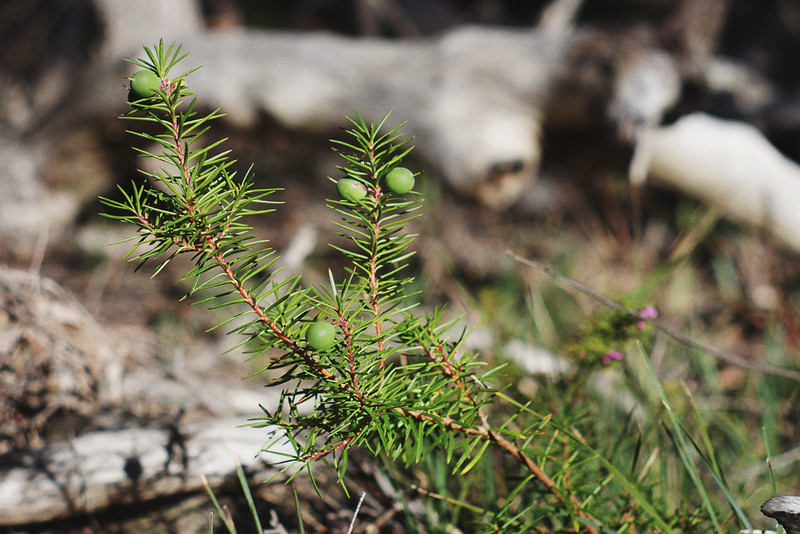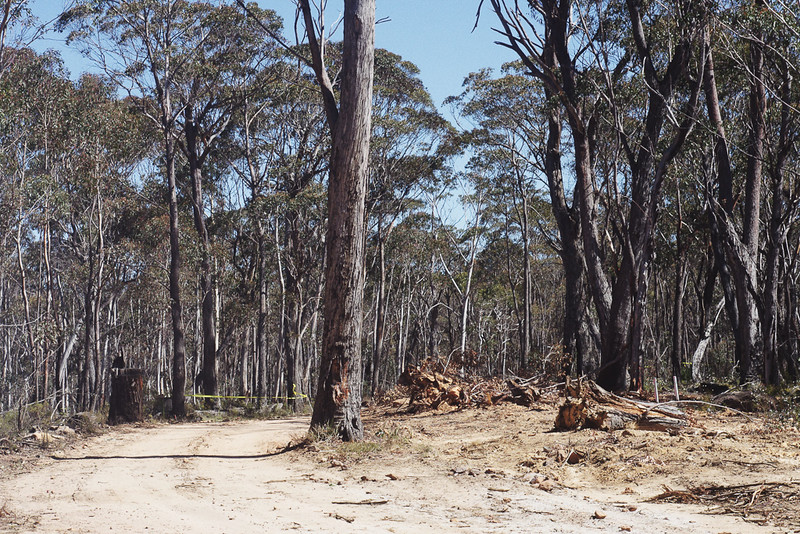 |
| Ray navigating to the next survey transect through open eucalypt woodland, dominated by a ground layer of Pteridium ferns. |
As community ecologists, we were not interested only in the "well-being" of a single plant species, but were also observing the neighbour species and the environment in which they live. These biotic and abiotic associations will allow us to predict habitat requirements of the focal species (i.e. P. hindii).
 |
| A fruit-bearing Persoonia hindii, which is listed as endangered under NSW government. Our recent tracks covered an area of about three football fields (within an 40km2 forest area), but only found the plant within 6.5% of the total area. |
What's the point of this field survey? The investigation area is being disturbed by coal mining. Trees are being cleared to pave ways for water-discharge pipes. Legislation however demands the mining company to reassess its impact on local ecosystem including endangered species such as P. hindii. Our data will help mapping the locations where P. hindii occurs in high density (i.e. species distribution model), and mine managers will be required to avoid cutting their pipes through these hot spots.


0 comments:
Post a Comment